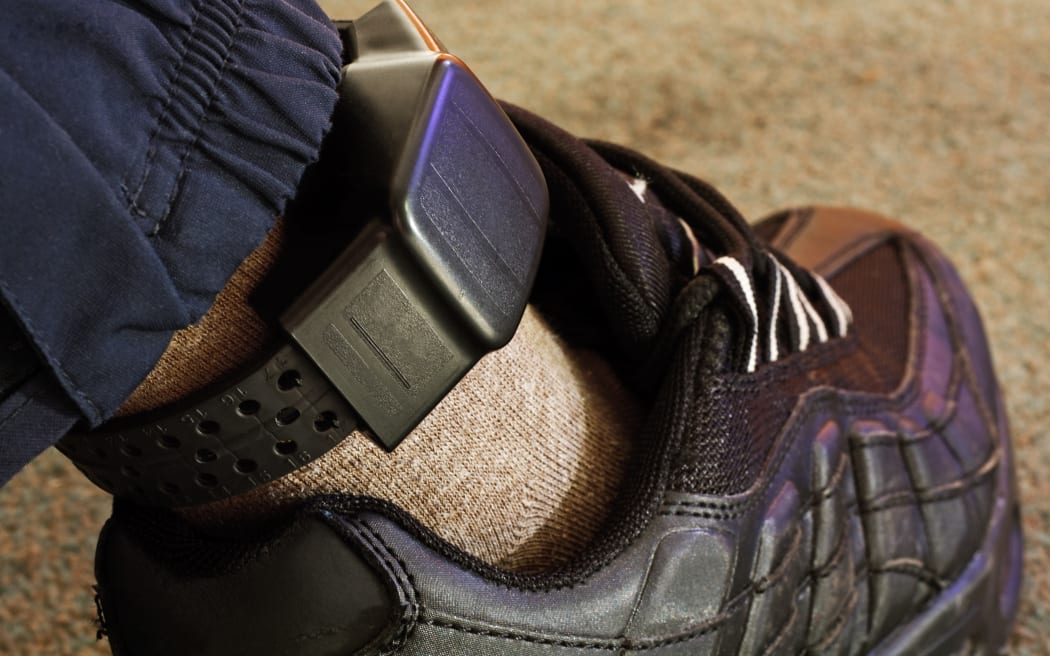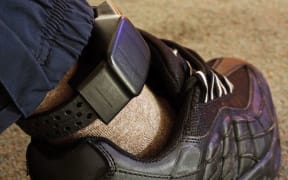
Photo: 123RF
The tamper and abscond rate of electronic bail bracelets rate sits at around 1.4 percent for July this year, Corrections says.
A police report, EM Bail - "Foiling" and Monitoring Limitations, leaked to the New Zealand Herald, claims people are wrapping their bail bracelets in foil to avoid detection, before going on to commit crimes, including ram raids.
New Zealand Police assistant commissioner Naila Hassan told Morning Report the document was based on one district - Canterbury - and was not intended to portray a national view of the situation.

New Zealand Police assistant commissioner Naila Hassan. Photo: RNZ / Finn Blackwell
"I think it's important to note it was one district, it was for an internal audience."
It was not unusual for police for produce a document on emerging risks, she said.
"It's then for us as an organisation to look at those risks that are identified and be able to work through processes and manage those risks."
Corrections national commissioner Leigh Marsh told Morning Report there were a number of ways people tampered with the bracelets.
In a statement released on Sunday, Marsh said the practice of foiling was not new and all people on electronic bail were considered high risk.
Marsh said the number of people on monitored bail had increased from 495 as of 30 June in 2017 to 2345 at 30 June this year.
Corrections had been actively recruiting and retaining electronic monitoring staff, he said.
"The abscond or tamper rate with our bracelets is as low as it's always been - it's around 1.4 percent for July this year," Marsh told Morning Report.
"Yes the overall number has increased but it has increased in line with the overall population increasing."
There were a range of trending ways that people attempted to tamper with the bracelets, he said.
"The way the technology works is we use really three modes of communication for the bracelets so when someone's at home it talks to a base unit which is a bit like your WiFi router and that's how it communicates data while on the premises.
"When they go out into the public area it talks to a satellite a bit like your car GPS and that satellite records longitude, latitude and altitude and any other data from the device, which is battery levels, any tampering, any cutting of the bracelets, is transmitted through the cell networks and we operate across two separate cell networks for continuity across those bracelets."
Marsh said if someone cut their bracelet, as soon as it was identified, police were called.
People who abscond were caught and put before court, he said.
"All EM bailees from our end are treated as high risk and result in an automatic call to police which is slightly different to the ones we manage under Sentence and Orders, which are supported in tandem with a probation officer."
Corrections had not been provided with the report, he said, but Hassan said police intended to speak with Corrections about it.
It was concerning people were breaching their EM bail conditions, she said.
"Our role as New Zealand police is to keep the public and our staff safe by insuring that when there is a breach notified by Corrections, we respond to that accordingly," she said.
"We need to make sure we that we analyse the information that's brought to us, that we identify who the most serious offenders and that we respond to those quicker than the less serious offenders."
Justice advocate Aphiphany Forward-Taua feared the report amounted to nothing more than political football.
She said it only focused on one region, and political parties should not be making policy from that.
"Rather what we should be focusing on is developing responsible policy and focusing on the drivers of harm and crime."
The report came as no surprise to victim advocate Ruth Money.
"Everybody thinks that Corrections are monitoring the GPS 24/7 in real time with many many resources able to swing into action, but it simply isn't the case," she said.
She and her colleagues were seeing the system was under-resourced time and time again with people who were absconding.
Money said the system was not fit for purpose "[with] the fact that you can easily foil the system by literally putting tin foil around the bracelet".
She was seeing more offenders being given home detention - much to the concern of victims.
"Victims have a real concern - and have had for many years now - a level of concern around how safe they are, when particularly violent offenders are given home detention based sentences."






